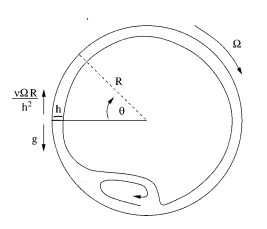Axial instability of a free-surface front in a partially-filled horizontal rotating cylinder
Axial instability of a free-surface front in a partially-filled horizontal rotating cylinder,
Hosoi, A.E., and L. Mahadevan, Physics of Fluids , 11, 97-106, 1999.




 Prof. L. Mahadevan
Prof. L. Mahadevan

